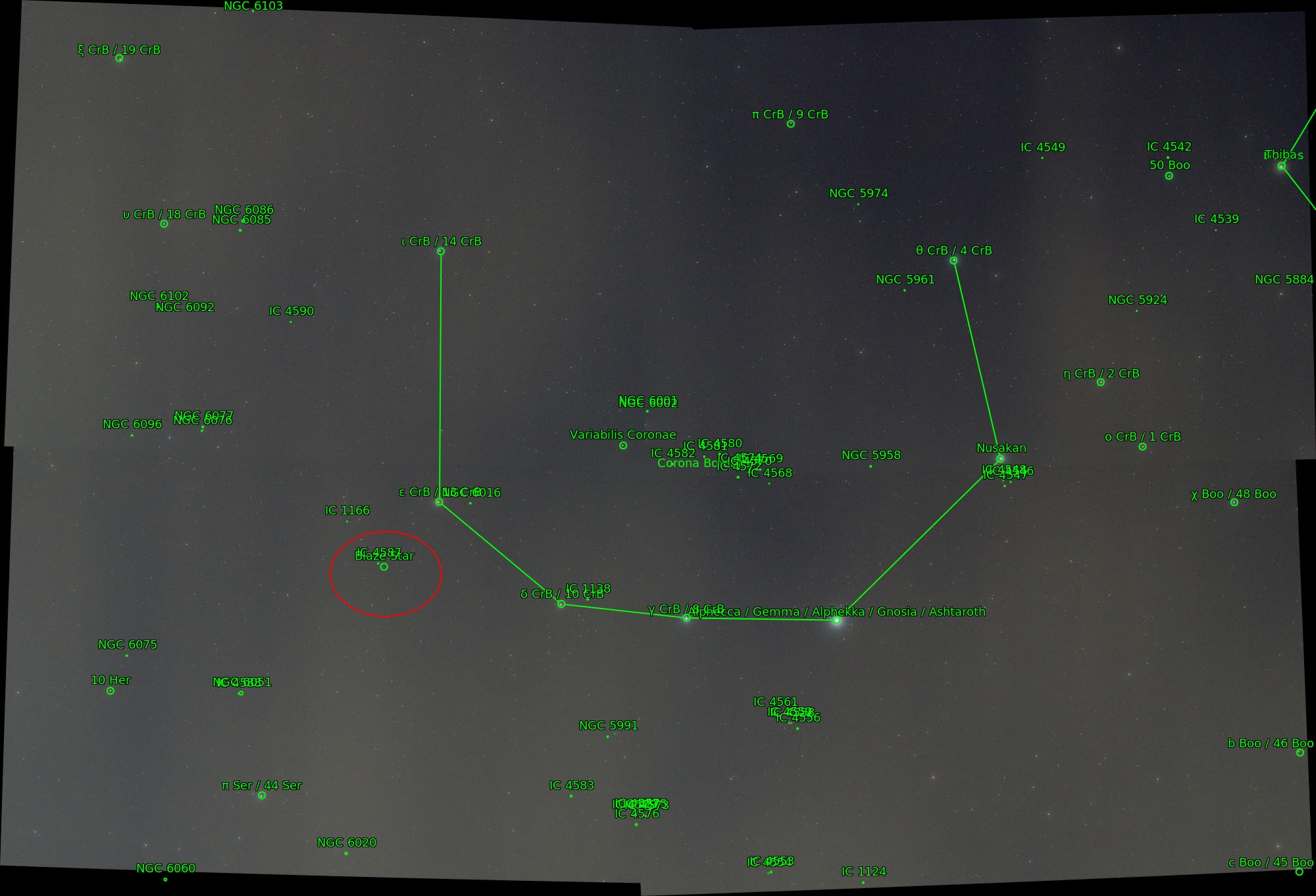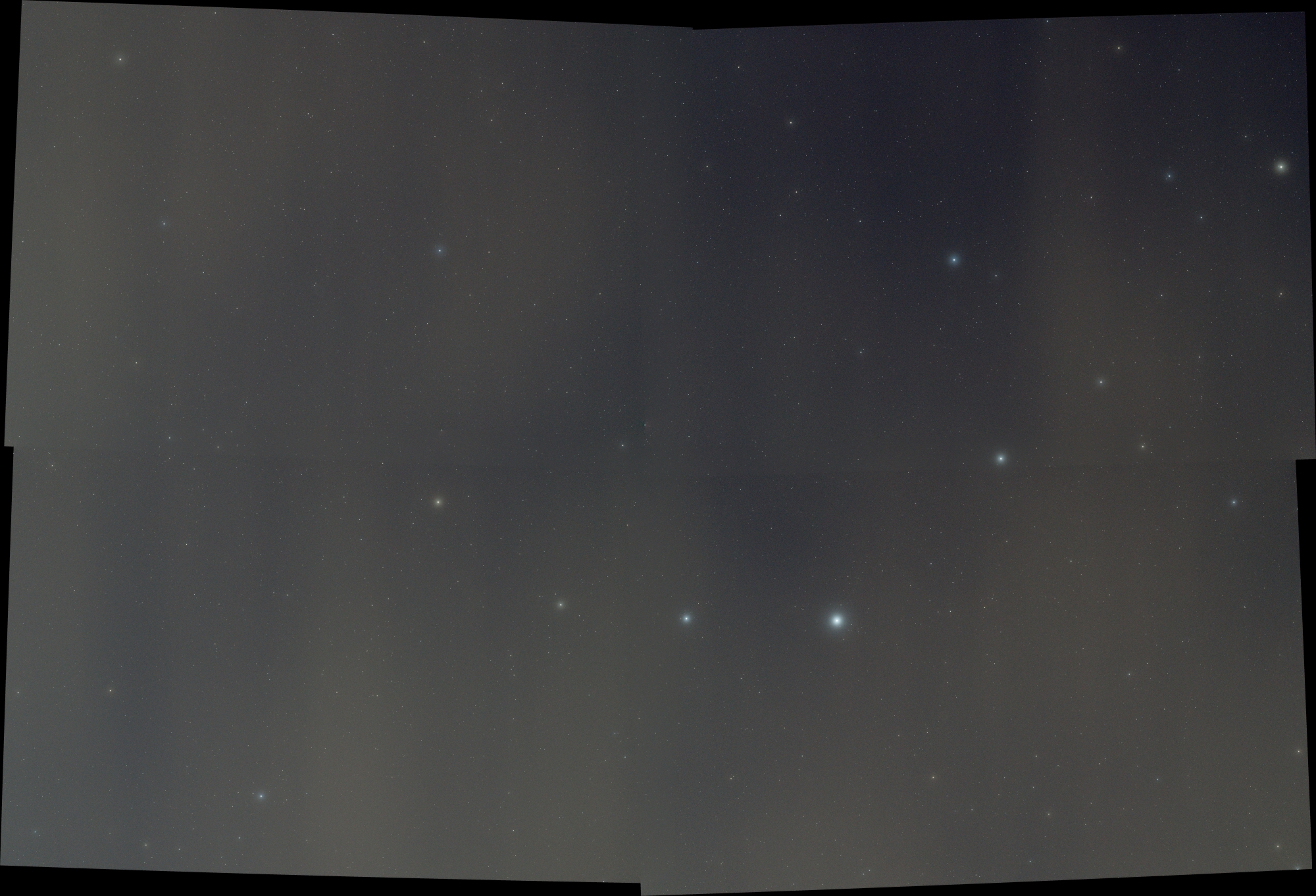T Coronae Borealis
| Photo Notes | |
|---|---|
| ISO | 2000 |
| Exposure | 10s |
| # of Frames | 4x101 |
| Filter | None |
| Processing | PixInsight |
Many thanks to an extremely rad friend for telling me about T Coronae Borealis, otherwise known as the Blaze Star!
T CrB is a binary star system and “recurrent nova” about 3000 light-years away. The two component stars are a white dwarf (smaller, hotter), red giant (larger, cooler).2.
All observed novas–a brief (weeks/months) period where a white dwarf dramatically increases in brightness–have happened in a close binary system like T CrB. In a nutshell, the white dwarf collects “accreted matter” (mostly hydrogen) from the companion star on its surface, before heating it up enough to cause runaway fusion.3 This makes for a huge increase in brightness!
T CrB is special because its nova event is recurrent, on an 80 year interval. They system’s novae have been observed in 1217, 1787, 1866, and 19464. There have been some fluctuations in the system’s brightness since 2016, the pattern of which match the 1946 nova–it’s going to happen again, and soon!
I have been trying to grab some “before” pictures of the system with weather-limited success. This is my attempt with a four-panel mosiac, through a transient high cloud layer. I will keep working on this, though!
Here is the same image, “plate solved” and annotated with the star/galaxy names:


